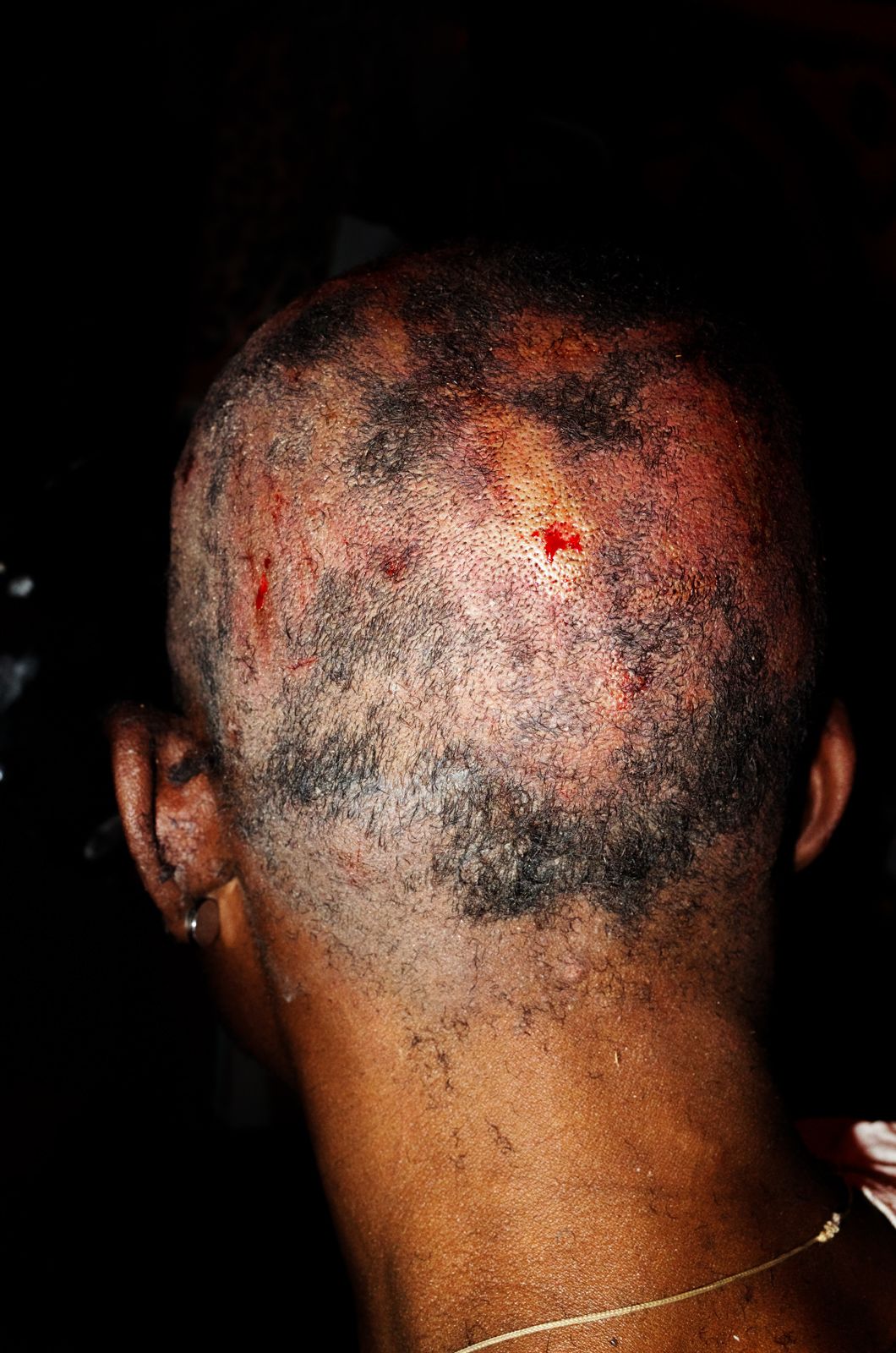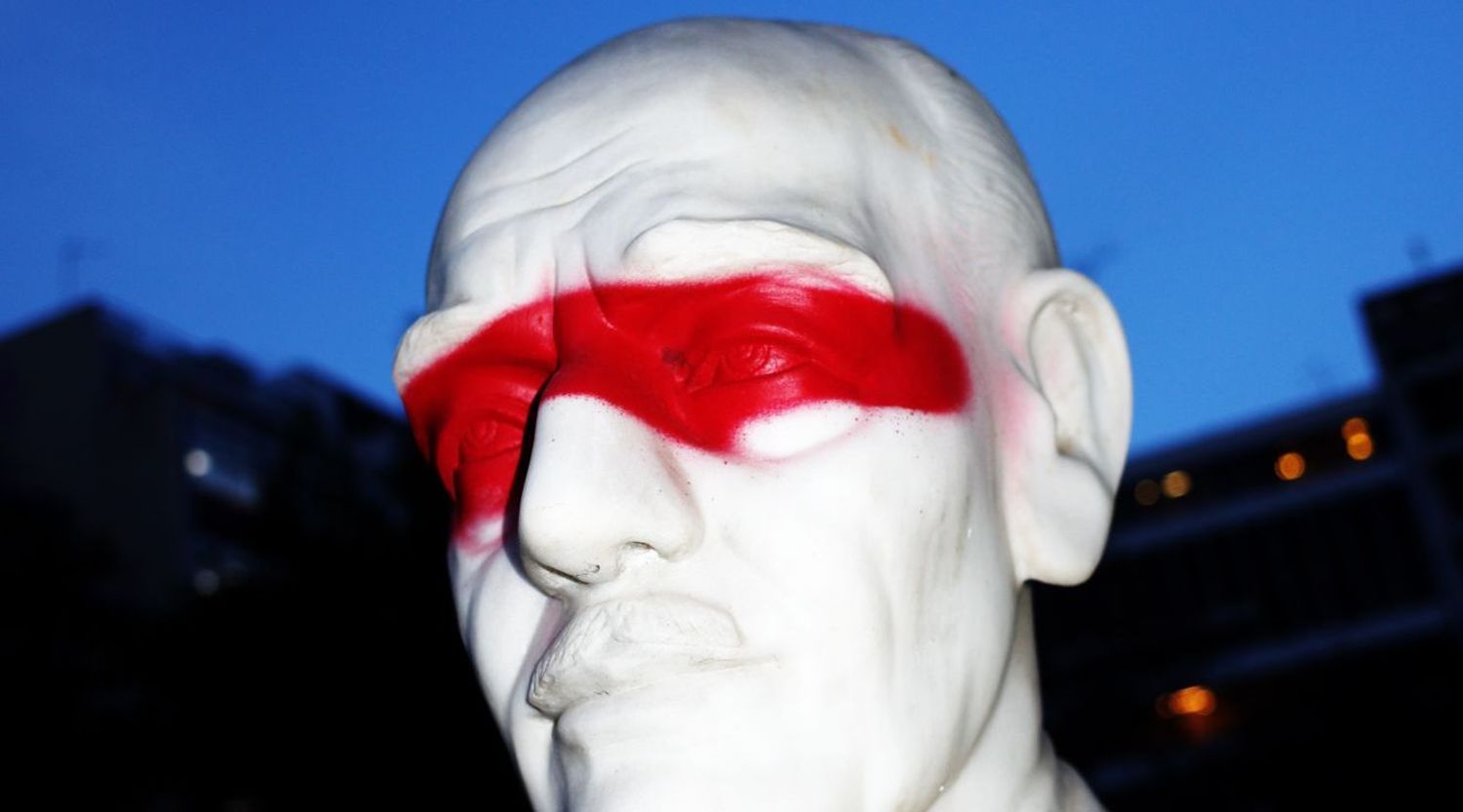The past decade has been a remarkably difficult one in Greece. The country’s fragile finances, stricken from the very beginning of the worldwide economic crisis, have yet to fully recover. Discussing the problem on the streets of Athens, it is common for people to sigh when they hear the word “crisis.” After all, Greeks reason, a crisis should end. Their situation is more like a new, hard-to-bear normality. As of now, any light at the end of the tunnel remains, for many, just a pinprick.

Enter Panos Kefalos. A young photographer, born and raised in Athens, who came to prominence in 2016 on the strength of his gripping, black-and-white documentary series “Saints.” The project, which came together thanks to a year-long residency at La Fabrica, in Italy, was described by Christian Caujolle as a “group of documentary images traversed by a vital energy.” It was later named a Juror’s Pick in the LensCulture Street Photography Awards 2016.
After receiving so much acclaim for his striking, high-contrast, black-and-white images, surely Kefalos has continued working in monochrome? No—his latest series plunges him headfirst into a world of deep, bright, saturated color. How did this conversion come about? There is no simple answer, so it’s worth going back to the beginning…
Kefalos’ father was a painter, and the younger Kefalos grew up in his studio, amidst the palettes and paints. So, of course he gravitated to the brush and easel? Not at all. His first creative outlet was music: heavy metal, specifically. Into his late teens, he pushed his musical talents as far as they would go. A life on the stage was not meant for Kefalos, but the experience left him with an appreciation for subcultures, especially those that lie out of sight, in the underground.

From there, he became interested in film. He went to school and studied cinematography, making short films in and around Athens. He learned to work with light, to collaborate, to move through the real world. But something was missing. Something drew him towards the power of the still image.
What was it about photography? Even today, he struggles to put words to its appeal. Indeed, the very basis of this pull comes from a powerful, instinctive attraction that is beyond language. And that’s what makes photography so special for him, among all the other art forms he’s used—it gives him access to a depth of feeling that wasn’t there before. While even the most basic narrative cinema projects demand a script, some kind of written directions, photography, on the other hand, frees Kefalos to work from his emotions, alone.
He began by photographing in the center of Athens. First in black-and-white, and always from a distance. His early pictures were grey and lacked contrast; their subjects were indistinct. Over time, he learned how to produce a more striking range of tones and also how to get closer to people.

His way forward became clear when he began his work with the “Saints.” From the unexpectedly deep relationship that Kefalos formed with the Afghan family portrayed in the project, he also came much closer to himself.
After Saints, Kefalos once more felt a need, an instinct, to begin something new and completely different. One day, walking around Athens, he ran across a man shaving his head, out in the street. Bright, red blood was shining on down his bald head. Something clicked. Kefalos began speaking with the man and describing his work. It quickly became clear that “Lava,” his first project in color, had been born.

For some, this might have represented a break from or a rejection of the past. For Kefalos, “Lava” is an extension and expansion of his way of seeing and moving through the world. Most importantly, Kefalos has begun to find the thread which connects all his work: the rich, unpredictable power of human relationships. Whether a brief exchange on the street or a multi-year journey with a single family, Kefalos explores his environs through his interactions with other people.
Indeed, in “Lava,” Kefalos has set aside the intensity of a single point of view in favor of a more kaleidoscopic vision. Yet image by image, what we are really discovering is Kefalos’ personal understanding of the city of Athens, his home. “Lava” is, more than anything, a diary of Kefalos’ own life and his daily experience of the vibrant, chaotic, and incredibly alive place where he resides. He wants to use his still images to convey the unique contemporary rhythm, pulse, and beat of these ancient streets.

But Kefalos is never one to become too inward—his lens and his eye are continually seeking ways to connect with his surroundings. Take the photograph of the man eating noodles [above]. Not a stolen, Bruce Gilden moment but a portrait of a longtime friend. Born in Sierra Leone, a resident of Greece for almost 10 years, and now back in Africa as he was never able to secure his visa. At least Kefalos was able to bid him goodbye and made sure to receive a call from him once he had arrived safely back in his homeland.
Or take his friend Ioannis, an almost Santa Claus-like figure that he met one day in the dead of wintertime [below]. Ioannis was homeless, yet his feet were so infected that he was largely confined to the bench he slept on. Kefalos would see him there, day after day, and would frequently stop for a conversation. One day, Ioannis was no longer there. After inquiring in the area, Kefalos found out that he had died suddenly, falling from the bench back to the earth, his new, permanent resting place.

Besides his own perspective, using the array of individuals portrayed in “Lava,” Kefalos is also trying to convey something that is harder to define. He admits that he hasn’t quite been able to capture this feeling in the frame, yet: an indescribable quick and hot rhythm. While Athens is eternal, it is also in constant flux, changing before his eyes. To the outside world, Athens seems to have gotten cooler—in multiple senses. More hip, more desirable, and also, less violent and crisis-stricken. But according to Kefalos, something is hiding behind this new image of the city. “In this ever-changing metropolis, which is different from one day to the next, from each hour to the next, I find myself confronting a constant state of emergency.” On the surface, business seems to be returning, construction cranes are busy, and restaurants are filling up once more. But invisibly, things are harder than ever: the tax burden spirals higher; pensions, already cut to the bone, get chopped down further. Tourists will continue to content themselves with the happy exterior that they are seeking, but down the smaller streets (the dead-end alleys, away from the celebrated sites) emotions are running high, the people are smoldering—and all this heat needs an outlet.
A few years ago, such outlets were obvious: protests, broken windows, tear gas, referendums, more protests. Today, according to Kefalos, something deeper is stirring. A volcano that appears dormant but internally is burning, brewing, churning towards another explosion. A city, and its millions of denizens, ready to blow.

Kefalos, meanwhile, has learned to wait. This is something that doesn’t come easily to him, as it chafes against his purely instinctual way of working. But waiting is essential, both in photography, and with people. Give that relationship time to develop, as you would a print. For someone to trust you and feel comfortable with you, there are no shortcuts. Sometimes you have to do things for people without a goal in mind. And slowly, over time, the channels widen.
Whether the city of Athens will have the same, saint-like patience that Kefalos is learning remains to be seen.
—Alexander Strecker
Editors’ note: This project was singled out by the jury of the Street Photography Awards 2017. See all of the inspiring work by the 37 winners, finalists and jurors’ picks!















